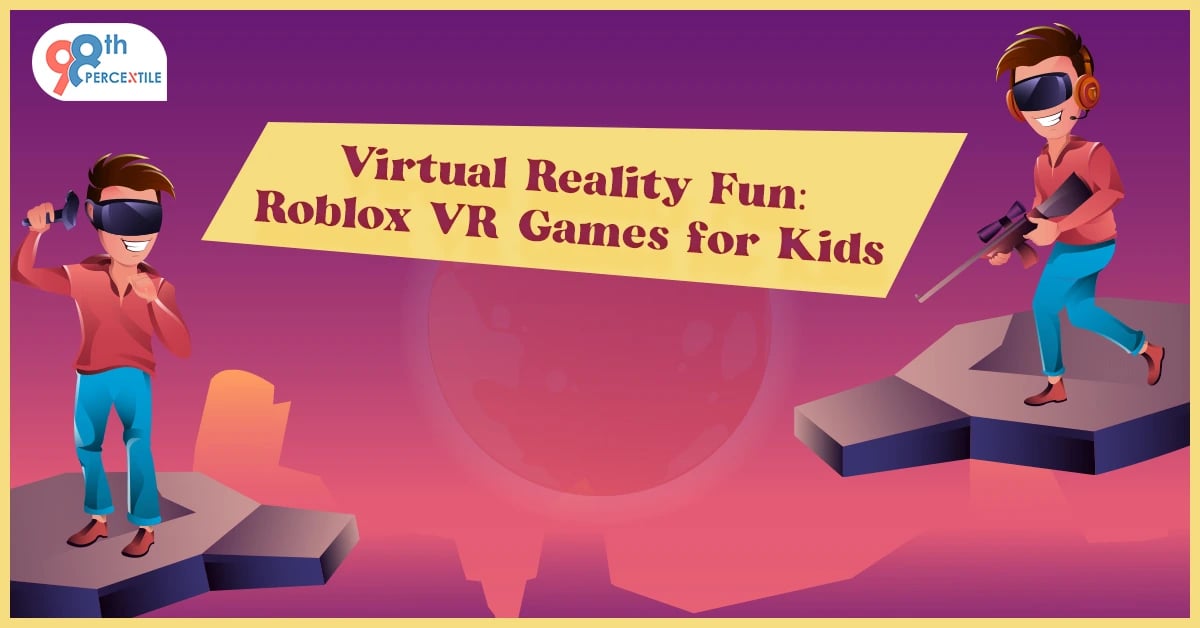What is VR?
Virtual Reality (VR) is an immersive technology that transports users to computer-generated environments, stimulating their senses and providing a lifelike experience. Utilizing specialized headsets, VR creates a three-dimensional, interactive space, enhancing gaming, education, and simulations. The technology immerses users in a simulated world, responding to their movements, making it a groundbreaking tool for various industries. VR applications extend beyond entertainment, influencing fields like healthcare, training, and design, offering unparalleled opportunities for realistic, experiential learning and engagement. As VR technology continues to advance, its impact on how people interact with digital content and each other is poised to grow significantly. 
Should young kids be introduced to the world of VR?
Introducing young kids to Virtual Reality (VR) can be a beneficial and educational experience. VR offers immersive, interactive environments that can enhance learning by providing hands-on, three-dimensional experiences. For educational purposes, VR can transport children to historical events, scientific phenomena, or fictional worlds, making lessons more engaging and memorable. It stimulates curiosity and fosters a deeper understanding of various subjects.
Moreover, VR can promote creativity by allowing children to explore and design within virtual spaces. This hands-on approach encourages imaginative thinking and problem-solving skills. Additionally, VR can be a valuable tool for children with learning differences, offering tailored experiences to suit individual learning styles.
However, careful consideration is necessary, and supervision is crucial. Screen time and age-appropriate content are concerns that parents and educators must address. Striking a balance between utilizing VR for educational purposes and ensuring age-appropriate exposure is essential. Collaborative efforts between parents, educators, and technology developers can harness VR's potential as a powerful educational tool, providing young minds with new and exciting ways to learn and explore the world around them.
What teachers need to teach VR in the classrooms?
- Teachers need the following:
- Professional Development Workshops:.
- Hands-On Training Sessions.
- Incorporate VR Into Teacher Training Programs.
- Collaborate with VR Experts.
- Create a VR Learning Community.
- Provide Access to VR Equipment.
- Develop Curriculum Guides.
- Model VR Lessons.
- Address Ethical and Safety Considerations.
- Encourage Experimentation and Innovation.
- Offer Ongoing Support.
- Evaluate and Iterate.
By combining these strategies, educators can be adequately prepared to embrace VR technology, ensuring a seamless and impactful integration into the classroom. This holistic approach addresses the technical, pedagogical, and ethical aspects of teaching with VR, empowering teachers to harness the full potential of immersive technology for educational purposes.
What do parents think about VR in the classrooms?
Parents' views on Virtual Reality (VR) in classrooms are varied, reflecting a mix of enthusiasm and apprehension. Many parents appreciate the potential of VR to revolutionize education, providing immersive and interactive learning experiences. They see it as a tool that can engage students, making lessons more captivating and fostering a deeper understanding of complex subjects.
However, concerns exist, primarily regarding screen time and the potential for isolation. Some parents worry about the extended use of VR and its impact on children's eyesight and overall well-being. Additionally, there are concerns about students becoming socially disconnected when immersed in virtual environments for extended periods.
Parental opinions also hinge on the quality and appropriateness of VR content. Ensuring that VR experiences align with educational goals and are age-appropriate is crucial. Some parents advocate for clear guidelines and monitoring mechanisms to maintain a balance between technology use and traditional teaching methods.
Overall, while parents recognize the potential benefits of integrating VR into classrooms, they emphasize the importance of responsible implementation, ongoing communication, and transparency to address any concerns and ensure that the technology complements, rather than hinders, their children's educational journey.
How can young kids utilize VR in the best possible way?
Children can maximize the benefits of Virtual Reality (VR) by engaging in a variety of educational and creative activities. Firstly, VR can serve as an immersive learning tool, allowing kids to explore historical events, scientific concepts, and geographic locations in an interactive and captivating manner. Educational VR apps and experiences can enhance their understanding of complex subjects.
Additionally, VR provides a platform for imaginative play and creativity. Children can design their virtual worlds, fostering creativity and problem-solving skills through platforms like Minecraft VR or Tilt Brush. These experiences encourage them to think critically, design, and express their ideas in a three-dimensional space.
Furthermore, VR can facilitate virtual travel experiences, exposing kids to diverse cultures and perspectives, and promoting global awareness. Virtual field trips and cultural experiences allow them to broaden their horizons from the comfort of their classrooms or homes.
In the gaming realm, kid-friendly VR games offer a combination of entertainment and cognitive development, encouraging strategic thinking and coordination.
Parents and educators must curate age-appropriate content, set time limits, and supervise VR activities to ensure a balanced and enriching experience. By integrating VR into their learning and playtime, children can benefit from a diverse and immersive range of educational and creative opportunities.
What is the future of VR?
The future of Virtual Reality (VR) holds tremendous promise across various domains. As technology advances, VR is poised to become more immersive, accessible, and integral to our daily lives. In education, VR could revolutionize the way students learn by providing realistic and interactive experiences, transcending traditional classroom boundaries. Virtual workplaces may become more prevalent, enabling remote collaboration with a sense of physical presence, potentially transforming the nature of work.
In healthcare, VR holds potential for therapeutic applications, such as pain management, exposure therapy, and surgical simulations. As VR hardware becomes more affordable and user-friendly, its adoption may surge in entertainment, gaming, and social experiences, creating shared virtual spaces for global interactions.
The development of augmented reality (AR) and mixed reality (MR) may further blur the lines between the virtual and real worlds. Seamless integration of VR into daily routines, from training simulations to architectural design, is likely to redefine how industries operate.
Book a free trial of coding class for your kid now!
Join 98thPercentile for more information.

 Students/Staff
Students/Staff Parents
Parents ElevatEd
ElevatEd













